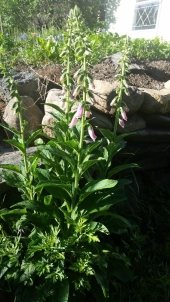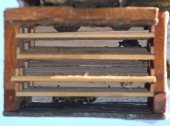




 pumpkin
pumpkin 2
2




 1
1




 3
3




 1
1
















EcoHouse wrote:
Of course mastery of any science means no need of lists or books.
 Then again, I've stuck to sciences that feature large tables of seemingly-arbitrary numbers known with breathtaking precision, such as chemistry and physics.
Then again, I've stuck to sciences that feature large tables of seemingly-arbitrary numbers known with breathtaking precision, such as chemistry and physics.New Earth Wise wrote:
He just leaves the cover crops and doesn't mow them, because he's got lot's of snow in winter that does the work for him.
"the qualities of these bacteria, like the heat of the sun, electricity, or the qualities of metals, are part of the storehouse of knowledge of all men. They are manifestations of the laws of nature, free to all men and reserved exclusively to none." SCOTUS, Funk Bros. Seed Co. v. Kale Inoculant Co.




Brenda
Bloom where you are planted.
http://restfultrailsfoodforestgarden.blogspot.com/




My Marxist Feminist Dialectic Brings All The Boys To The Yard!












Josiah Garber wrote:I finally got my Soil Builder / Production Seed Mixture together. Let me know what you think of it.
http://www.thefarmingpodcast.com/store/permaculture-seed-mix-0.9
I tested something similar with less soil builders last year on rather poor soil and got surprisingly good production from it. I'm hoping to do some more land like this spring as well.
The season is short but the land is extremely cheap. Let's help each other grow food!









|
This tiny ad has a self esteem problem. Too much self esteem.
Support permies and give beautiful gifts to gardeners: permaculture playing cards.
https://gardener-gift.com/
|


